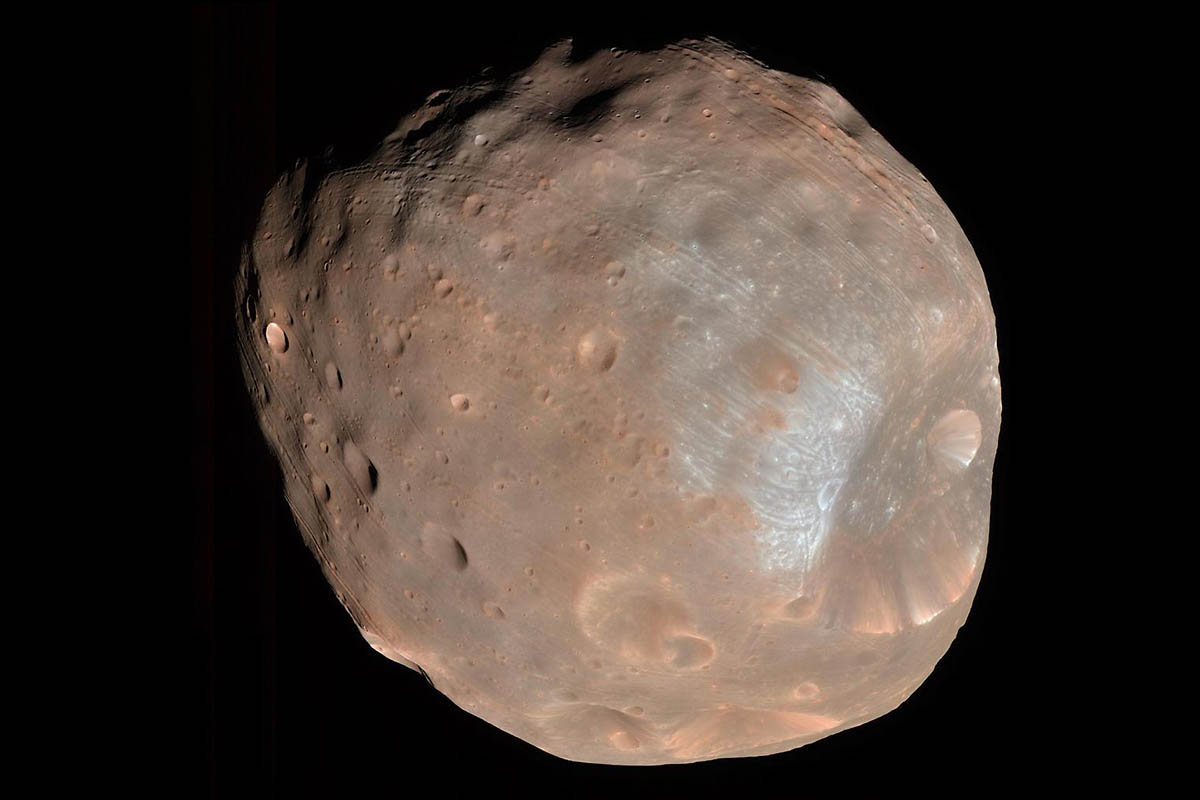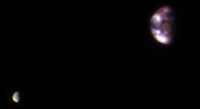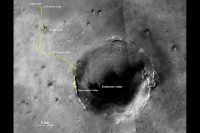The High Resolution Imaging Science Experiment (HiRISE) camera on NASA’s Mars Reconnaissance Orbiter took two images of the larger of Mars’ two moons, Phobos, within 10 minutes of each other on March 23rd, 2008. This is the first, taken from a distance of about 6,800 kilometers (about 4,200 miles). It is presented in color by combining data from the camera’s blue-green, red, and near-infrared channels. (NASA/JPL-Caltech/University of Arizona)
Home The High Resolution Imaging Science Experiment (HiRISE) camera on NASA’s Mars Reconnaissance Orbiter took two images of the larger of Mars’ two moons, Phobos, within 10 minutes of each other on March 23rd, 2008. This is the first, taken from a distance of about 6,800 kilometers (about 4,200 miles). It is presented in color by combining data from the camera’s blue-green, red, and near-infrared channels. (NASA/JPL-Caltech/University of Arizona) The High Resolution Imaging Science Experiment (HiRISE) camera on NASA's Mars Reconnaissance Orbiter took two images of the larger of Mars' two moons, Phobos, within 10 minutes of each other on March 23rd, 2008. This is the first, taken from a distance of about 6,800 kilometers (about 4,200 miles). It is presented in color by combining data from the camera's blue-green, red, and near-infrared channels. (NASA/JPL-Caltech/University of Arizona)
The High Resolution Imaging Science Experiment (HiRISE) camera on NASA’s Mars Reconnaissance Orbiter took two images of the larger of Mars’ two moons, Phobos, within 10 minutes of each other on March 23rd, 2008. This is the first, taken from a distance of about 6,800 kilometers (about 4,200 miles). It is presented in color by combining data from the camera’s blue-green, red, and near-infrared channels. (NASA/JPL-Caltech/University of Arizona)




